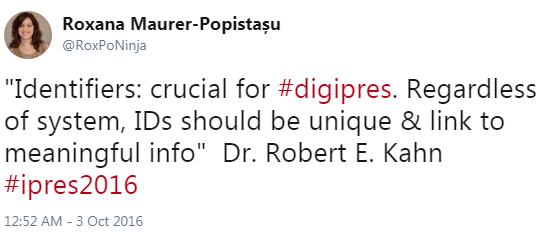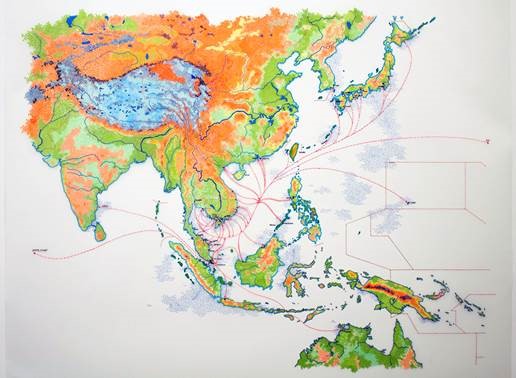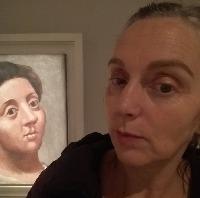DPC
Bit by bit, byte by byte: web archaeology going strong in the Netherlands!
Tjarda de Haan is Guest Curator for E-culture at Amsterdam Museum in the Netherlands
Since winning the Digital Preservation Award 2016 in the category The National Archives Award for Safeguarding the Digital Legacy in December 2016 our project accelerated! We have published the 'DIY Handbook for Web Archaeology' and the 'FREEZE! A manifesto for safeguarding and preserving born-digital heritage' and with this we have put web archaeology on the map in the Netherlands. Many initiatives took up the challenge. The KB National Library of the Netherlands has done some remarkable excavations, journals have published articles about web archaeology and the Journal for Media History will publish a special issue next year 'Media history for the future: Web Archaeology'.
Heritage preservation of contemporary dance and choreography
Suzan Tunca is a Dance Researcher for ICKamsterdam and this project was undertaken in collaboration with Motion Bank
Heritage preservation of contemporary dance and choreography through research and innovation in digital documentation and annotation of creative processes
ICKamsterdam and Motion Bank.
ICKamsterdam and Motion Bank join forces to optimize caring for the heritage of contemporary dance and choreography through the invention of new forms of digital documentation, notation and transmission of embodied knowledge. This unique collaboration integrates the verbal movement language research of Emio Greco I PC and ICKamsterdam with the annotation systems and goals of Motion Bank software development. In this way digital preservation media development is linked directly to the potential of establishing working vocabularies specific to various choreographers and performing artists. Documenting and annotating processes in performance creation enables the safeguarding of ephemeral and ineffable artistic contents in dance through time.
What, who, where, how? Persistent Identifiers at the National Library of Luxembourg
Roxana Popistasu is Digital Preservation Coordinator at Bibliothèque nationale de Luxembourg
“In digital preservation, identification of digital content is essential”, say A. Dappert and A. Farquhar in their iPRES 2017 article Permanence of the Scholarly Record: Persistent Identification and Digital Preservation – A Roadmap. The same idea appeared in the introduction of Robert E. Kahn’s keynote at iPRES 2016:

https://twitter.com/RoxPoNinja/status/782850754059132929
At the National Library of Luxembourg (BnL), we agree unequivocally: we cannot preserve and provide access to our national heritage without taking into account the reliable and sustainable identification of our digital resources. But how do we do that? What is the “best” persistent identifier (PID) system? Are there best practices when it comes to persistent identification? These are some of the questions we set out to answer at the start of our journey into finding the right PID system.
Preserving Poems. New challenges to archives and the digital creative process
Although the shift from paper to digital has been a major issue in the world of archives for several years, the delay in some disciplines between record creation and archive deposit has meant that, for many repositories, the challenge of processing born-digital archival material is a relatively new one. And although this development has prompted the creation of new practices, tools and methods of working, one constant has been the commitment that archives make to donors; to care for, preserve and where possible make available their valued content. Whether a filmmaker is handing over boxes full of 8mm film or hard drives worth of MP4 files an archivist must be able to confidently state that the material will be safe in their institution’s custody and that every effort will be made to afford access to researchers and the public as required. In the University Library the recent development of some of our research strengths within Special Collections has been prompted by the acquisition of collections which have enabled us to consider some of the unique questions surrounding digital archives, and to challenge ourselves to maintain these commitments as an archive.
The question of what can we do in this political climate… has, again, a relatively modest answer: small interventions with grand intention
Patricia Sleeman is Archivist (Electronic) at UNHCR in Geneva, Switzerland
 Tiffany Chung’s reconstructing an exodus history: boat trajectories in Asia, 2017
Tiffany Chung’s reconstructing an exodus history: boat trajectories in Asia, 2017
To be a digital archivist in UNHCR is interesting, challenging and inspiring all at once. To be part of an organization whose staff are often at the coalface of conflicts and operations which are concurrently taking place all over our world, witnessing the misery of displaced people is a unique experience. A privileged one.
Let’s be honest … a “honey we need to talk” with digital preservation
Michelle Lindlar is Digital Preservation Team Leader at Technische Informationsbibliothek (TIB) in Germany
It seems that most of us are well into the commitment stage of our relationship with digital preservation – it’s no longer a task tucked away in exclusive projects which only few institutions can participate in, but has growing acceptance as an institution’s core function. Or, to put it in the words of William Kilbride himself in reflecting on last year’s WDPD: “we have learned that it’s not about delaying the digital dark age: it’s about coming good on the digital promise”.
Music Treasures
Background
Within the Netherlands there are several archives with sheetmusic. There is not a national organization which covers those archives. Due to financial problems in 2013, all these archives were closed for public and their collections were no longer available. The largest collection is at the Stichting Omroep Muziek ((SOM) Dutch Broadcast Music), which has about 650,000 titles, classical music as well as popular music, salon music and, the unique part, the music which was specifically composed or arranged for the national radio and television broadcasts from 1920 until 1980 (180,000 titles).
Scotland, a leading Nation in Digital Preservation.
Fiona Hyslop is Cabinet Secretary for Culture, Tourism and External Affairs within the Scottish Government
On World Digital Preservation Day, I’d like to reflect on Scotland’s long tradition of preserving its documentary heritage and showcase how Scotland is helping to lead in the global challenge digital preservation.
This tradition dates back to 1286 to the first reference of a Scottish Government official William of Dumfries who had the responsibility of looking after records. This responsibility eventually evolved into the current role of Keeper of the Records of Scotland that we have today. To store our national archives General Register House was built in the 18th century, it is one of the oldest custom built archive buildings in the world still in use for its original purpose, and is home to National Records of Scotland which is responsible for Scotland’s national archive, as well as the registration of vital events and the taking of the 10 yearly national census.
Supporting Digital Preservation Infrastructures
Mariella Guercio is President of ANAI (Italian National Association of Archivists)
In the past few years, many initiatives have been developed to support or promote digital preservation infrastructures, specifically with reference to the quality of the repositories and to the definition of standards for interoperability. This might seem a promising opportunity for making concrete experiences and implementing technical solutions, but I think that the professionals in the preservation sector (mainly archivists and digital curators) should monitor very carefully these initiatives on digital preservation (for example, the ETSI draft for defining policy and security requirements for trust service providers offering long-term preservation of digital signatures; and – even more - the standard ISO 17068 “Information and documentation — Trusted third party repository for digital records,” with its narrow and limited definition of authenticity), for many reasons.
It was 20 years ago today...
Marcel Ras is Digital Preservation Manager for the Dutch Digital Heritage Network
It is almost 20 years ago that the pioneering publications on Digital Preservation were issued by initiative of the KB, the Dutch National Library. The NEDLIB papers described technical challenges and solutions for digital preservation. Preserving digital information was a very different job at the turn of the Century. The challenges with digital preservation were mainly framed in technical terms, as the NEDLIB papers showed us. With the turn of the century also came the millennium bug and the dooms of the “digital dark age”. Gloomy predictions adding some state of urgency and awareness to our work and the profession of digital preservation.








































































































































